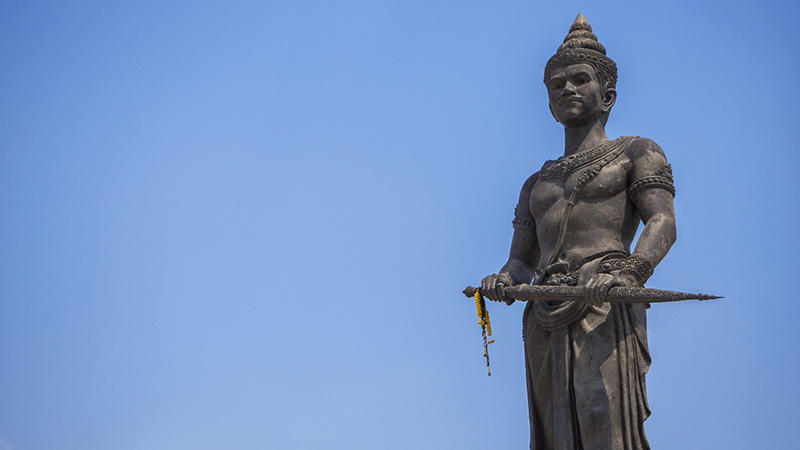The area in the Lower North found that humans came and lived there since the Late Prehistoric Era or not less than 2,000 years ago. Many archaeological sites were discovered tools, wisdom, ways of life such as drums, ceremonial kettledrums, iron slag, stone blades, etc.
It is known that the locals in this area have the knowledge and also contact with people in other places. It had developed from the Late Prehistoric Era until the Dvaravati Era and the time when Cambodian culture influenced to cover the area.

Sri Intharathit
The origins of the Sukhothai Kingdom, which we are familiar with, began with the fact that Pho Khun Pha Muang and Pho Khun Bang Klang Thao collaborated to expel Khom Sabard Klone Lum Pong from the city of Sukhothai and appointed Pho Khun Bang Klang Tua as the king named "Sri Intharathit" to be the origin of 9 kings who governed this city, which was later known as "Phra Ruang Dynasty"
In fact, the stone inscription Sri Chum indicates clearly that the father of Pho Khun Pha Muang, "Pho Khun Si Nam Thum," "reigning in two cities, one was called Sukhothai and the other one was called Si Setchanalai." It shows that the city existed before then, but there were no definite conclusions of the exact time. Academics believe that these cities were continued to evolve as a trade junction on important neighboring kingdoms such as Khmer and Myanmar before gradually increasing their importance through trade and political relations and finally became the epicenter of the great empires.
The interesting support of this concept is the wisdom of the Sukhothai resulted from a combination of cultures, arts, languages, religions, rituals as well as knowledge of management. Then, it gradually became a unique identity conveying influences to the land with endless succession.
However, under the virtues of Phra Ruang Dynasty throughout 200 years, Sukhothai Kingdom severely passed through the prosperous and depressing period. Then, King Trailoknat combined this land with Ayutthaya Kingdom in 1981 BE, but other neighboring cities still existed while preserving cultural identity despite the passing of being herded and the immigration of people from other places. And these unique identities become a part of "heritage of Phra Ruang" that should be proud of today.














